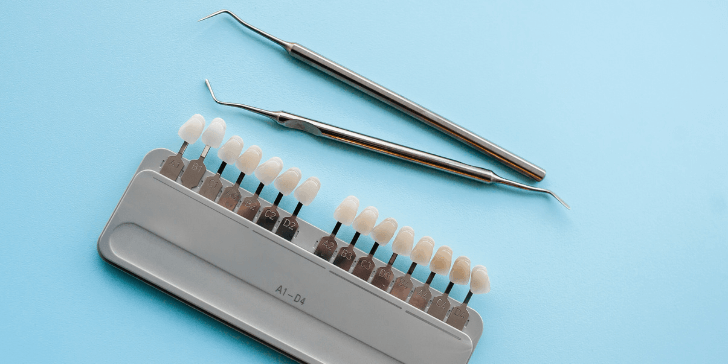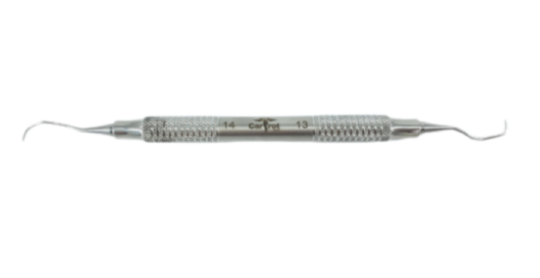
Table of Contents
Get Dental Catalogue PDF On Your Email
After Five Gracey Curette 13/14: When and How to Use It
The After Five Gracey Curette 13/14 is an essential tool in a dentist’s or hygienist’s instrument kit, specifically designed for proper scaling and root planing in periodontal treatments. It helps to clean deep pockets between teeth and gums, making it an important tool for maintaining oral health. In this blog post, we will explore what the After Five Gracey Curette 13/14 is, why it’s important, and how to use it easily in your dental practice.
What Is the After Five Gracey Curette 13/14?
The Gracey Curette 13/14 is a specialized dental instrument used to remove plaque and tartar from the surface of teeth, particularly in hard-to-reach areas. It belongs to the Gracey curette family, which was developed by Dr. Clayton Gracey in the 1940s. These curettes are designed for subgingival scaling, which involves cleaning beneath the gum line.
The After Five version of the Gracey Curette was introduced to improve access to deeper pockets of the gums. The key difference between standard Gracey curettes and the After Five curettes is the extended working end. The After Five curettes have a longer, thinner blade that allows for more precise scaling in deeper pockets, which is especially helpful for periodontal treatments.
The Gracey Curette 13/14 specifically targets the posterior teeth, meaning the back teeth (molars and premolars), both on the buccal (cheek) and lingual (tongue) surfaces. It is especially effective for removing calculus in areas that are otherwise difficult to reach with standard instruments.

Why Is the After Five Gracey Curette 13/14 Important?
The After Five Gracey Curette 13/14 is designed for deep periodontal pockets, typically those over 5mm, and for areas where the gum tissue is more challenging to access. Here’s why it is so important:
- Deep Pocket Access: The extended blade allows the instrument to reach deep into periodontal pockets, where standard curettes may not be effective. This is essential for treating periodontal disease and preventing tooth loss.
- Precision Cleaning: The thinner blade of the After Five curette helps with precise removal of calculus and plaque, ensuring that the root surface is smooth and clean. This promotes better healing of the gums.
- Improved Patient Comfort: The long, thin blade of the After Five curette also means that less force is needed during scaling, which can make the procedure more comfortable for patients.
- Prevents Gum Damage: Using an After Five curette reduces the risk of damaging the gum tissue compared to traditional curettes. The slim design allows for more controlled movements, minimizing trauma to the sensitive gums.
When to Use the After Five Gracey Curette 13/14
The After Five Gracey Curette 13/14 is best used in specific situations where regular instruments may not be sufficient. Here are the main scenarios where you would choose this curette:
- Deep Periodontal Pockets: When the gum pockets are deeper than 5mm, the After Five Gracey Curette 13/14 is perfect for reaching into these areas to remove plaque and tartar. The longer and thinner blade helps access the posterior teeth and deeper pockets effectively.
- Posterior Teeth Scaling: The Curette 13/14 is specifically designed for scaling on the posterior (back) teeth. This includes both the buccal and lingual surfaces of molars and premolars, which are often harder to clean with standard instruments.
- Periodontal Maintenance: If a patient has received periodontal treatment and is in a maintenance phase, the After Five Gracey Curette 13/14 can be used to ensure that the gum pockets stay clean and free from calculus build-up.
- Challenging Access Areas: Areas where the gum tissue is tight or where the tooth is particularly irregular in shape may require the After Five Gracey Curette 13/14 for thorough cleaning.
How to Use the After Five Gracey Curette 13/14
Using the After Five Gracey Curette 13/14 properly is essential for effective treatment and patient comfort. Below are the key steps for using this instrument:
1. Prepare Your Patient
Before you begin any treatment, make sure your patient is comfortable. Use local anesthesia if necessary, particularly for deeper cleaning procedures or if the patient experiences discomfort with probing or scaling.
2. Select the Correct Instrument
The Gracey Curette 13/14 is a single-ended instrument, meaning it is designed to be used on only one specific part of the tooth. It is important to choose the correct instrument for the task at hand, as there are other Gracey curettes designed for different areas of the mouth.
3. Position the Instrument Properly
To use the After Five Gracey Curette 13/14, position the working end of the instrument at a 70 to 80-degree angle to the surface of the tooth. This angle helps ensure that you are effectively removing calculus while preventing damage to the gums.
4. Use a Gentle Pulling Motion
The After Five Gracey Curette is meant for subgingival use, which means it should be used gently below the gum line. Use a pulling motion towards you, not pushing, to remove calculus and plaque. Avoid heavy force, as this can cause discomfort to the patient or damage the gum tissue.
5. Work in Small Sections
Because the posterior teeth are often difficult to access, work in small, manageable sections to ensure you’re thoroughly cleaning every area. Use the curette on both the buccal and lingual surfaces, especially when the pockets are deep.
6. Inspect for Cleanliness
After using the curette, it’s important to check the area for cleanliness. Use an explorer or another tool to ensure there is no residual calculus. This step ensures you are providing the best care for your patient.
7. Patient Aftercare
Once the procedure is done, advise the patient on aftercare. This may include tips for keeping the treated area clean, maintaining good oral hygiene, and scheduling regular follow-up appointments for maintenance.
Conclusion
The After Five Gracey Curette 13/14 is an essential tool for dental professionals working with patients who have deeper periodontal pockets or harder-to-reach areas in the mouth. Its unique design allows for more precise cleaning of posterior teeth, especially in challenging areas that traditional instruments cannot access. By using this curette correctly, you can help ensure better patient outcomes and promote long-term oral health.
If you’re looking to enhance your periodontal care toolkit, the After Five Gracey Curette 13/14 is a must-have. You can find it in the carrothcp Dental Catalogue. Proper training and practice will allow you to use it easily, leading to better treatment for your patients and improved overall care.

